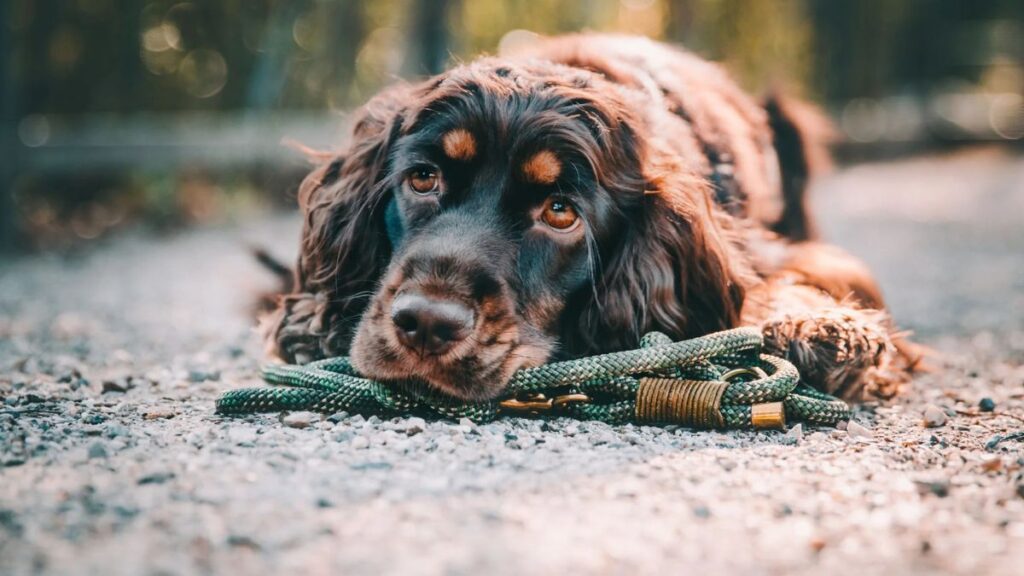There’s a particular gleam in their eyes—a glint that says, “I was born to do more than sit pretty.” The working cocker spaniel doesn’t just fetch balls and play dead for treats. No, these aren’t your typical Instagram lapdogs. These are the athletes, the masterminds, the tireless dynamos of the dog world. Compact, charming, and possessed of a grit that outpaces most gym memberships, the working cocker spaniel is fast becoming the dog world’s best-kept secret—and for good reason.
In an era where dog breeds are increasingly seen as lifestyle accessories (hello, teacup pomskies and designer doodles), the working cocker stands in stoic contrast. Here’s a dog that doesn’t just look like it means business—it was bred for it.
Origins of the Energizer Spaniel
To understand the working cocker spaniel is to dive into Britain’s muddy hedgerows, where these dogs earned their stripes flushing game for hunters. Their name isn’t just poetic—“cocker” refers to their original quarry, the woodcock, a bird they’d flush from dense undergrowth with uncanny precision.
The “working” designation distinguishes them from their show counterparts. Where show cockers are bred for aesthetics—symmetry, coat length, a certain soft-eyed expression—working cockers are engineered for function. Their ears are shorter, their builds leaner, their expressions sharper. Think of it as the difference between a Formula 1 car and a concept car at a luxury expo. Both turn heads. One wins races.
The Drive That Doesn’t Quit
Here’s the first rule of working cocker ownership: be prepared to move.
This breed isn’t for the couch-inclined or the “maybe I’ll walk him tomorrow” types. A working cocker spaniel is a kinetic sculpture, built to be in perpetual motion. It’s not just about the energy—it’s about purpose. Give them a task, and they’ll perform it with a laser focus that borders on obsessive.
Bird? Tracked.
Ball? Retrieved.
Sock? Located with surgical accuracy.
It’s no accident that these dogs are favored by gamekeepers, search and rescue teams, and even military units. Their noses are exceptional (second only to bloodhounds in some studies), and their ability to follow instructions under pressure is jaw-dropping. One handler famously claimed that his cocker “had more discipline than half the blokes in my regiment.” We believe him.
Not Just for the Fields Anymore
But don’t let their working pedigree fool you into thinking these dogs are only for tweed-clad hunters with double-barrel shotguns. The working cocker spaniel has recently begun moonlighting as a city slicker.
Urban professionals, young families, even elite athletes have discovered that the breed’s adaptability is one of its best-kept secrets. With proper training and stimulation, a working cocker can thrive in a two-bedroom flat just as easily as on a country estate—provided you’re ready to put in the legwork. Literally.
If there’s one thing this breed despises, it’s boredom. And when boredom strikes, a working cocker becomes a one-dog demolition crew. We’re talking shredded mail, chewed skirting boards, and a thousand-yard stare that screams, “You did this to me.”
Intelligence, Meet Mischief
Working cockers are whip-smart. Not “sit, stay, roll over” smart—problem-solving smart. The kind of intelligence that finds loopholes in your commands and pushes boundaries like a curious toddler. They don’t just obey—they negotiate.
This makes training both a thrill and a challenge. Positive reinforcement is key, as is variety. Repetition bores them. Complexity excites them. If you want a dog that learns fast and pushes you to be a better handler, look no further. But be warned: they can outwit the unprepared.
One owner recounted her cocker learning how to open a child-proof cabinet, bypass a latch, and retrieve a hidden stash of treats—all in under ten minutes. She installed a second lock. The dog opened that too.
Grooming and Glory: Managing the Mayhem
While not as high-maintenance as their show cousins, working cockers aren’t wash-and-go. Their coats—typically shorter and more practical—still require regular brushing to prevent matting, especially if they’re gallivanting through hedges and mud puddles (and trust us, they will).
Ears can be a point of concern. Long and floppy, they’re prone to infections if not cleaned regularly. And yes, those soulful eyes will manipulate you into extra treats, extra walks, and possibly surrendering your side of the bed. Stand firm. Or don’t. You’re only human.
Color Me Impressed: A Coat for Every Personality
Working cockers come in a dizzying array of colors. Solid black, liver, golden, roan, and even tricolored variants. Some enthusiasts argue that certain colors correlate with temperament—blacks are serious, goldens are cheeky, and liver-roans are somewhere between a therapist and a stand-up comic.
Science doesn’t necessarily back this up, but anecdotes fly thick and fast in working cocker communities. What’s clear is that no matter the coat, the personality is unmistakable: tenacious, affectionate, hilarious, and always, always ready for action.
Health, Longevity, and That Famous Spaniel Stamina
Working cockers, when responsibly bred, are robust little units. With lifespans ranging from 12 to 15 years, they often outlast larger breeds. Still, they’re not invincible.
Common health issues include:
-
Ear infections (due to floppy ear design)
-
Hip dysplasia (less common, but possible)
-
Progressive retinal atrophy (PRA)—a genetic condition causing vision loss
-
Spaniel Rage Syndrome (extremely rare, but worth knowing)
The best defense is a good breeder. A working cocker should come with health testing certifications, a detailed pedigree, and ideally, a breeder who treats them like family—not inventory.
The Family Factor: Great with Kids, But…
Yes, they’re fabulous with children. Yes, they’ll adore your toddler like a second tail. But here’s the caveat: this isn’t a passive dog. A working cocker doesn’t “tolerate” children—it interacts with them. Constantly.
They’ll herd your kids during garden games. They’ll grab toys mid-play. They’ll match energy beat for beat, which is wonderful for active households but potentially overwhelming for quieter ones. Early training and boundaries are crucial, especially if young kids are part of the picture.
The Hidden Depth: Emotional Intelligence and Loyalty
Working cockers bond deeply. They’re not aloof or stoic—they’re clingy little shadows with hearts the size of Labradors. If you want a dog who’s content to do its own thing all day, look elsewhere.
But if you want a four-legged therapist who senses when you’re down, snuggles with surgical precision, and follows you from room to room like your most devoted intern, welcome to spaniel life. They thrive on companionship. Isolation, for this breed, is emotional purgatory.
Separation anxiety can become an issue if not addressed early. Counter it with crate training, confidence-building routines, and—if you must leave them—something with your scent. Yes, a sock will do. Yes, it might come back wet.
Should You Get One? The SPARKLE Take
If you want a showpiece for your social media grid, skip the working cocker.
If you want a running partner, a camping buddy, a snuggler, a confidant, and a comedian with boundless energy—get in line.
But know this: the working cocker spaniel will not adjust to your lifestyle. You will adjust to theirs. You’ll walk more. You’ll think more. You’ll laugh more. You’ll vacuum more. Your life will, simply put, get messier—and infinitely better.
Final Bark: Not Just a Breed, a Movement
The working cocker spaniel is more than a dog. It’s a revolution wrapped in silky ears and turbo-charged paws. Whether chasing scents or sunbeams, these dogs embody the kind of full-throttle joy most of us forgot we needed.
They won’t change for you. But they will change you—and that, in the end, is the magic of the breed.






